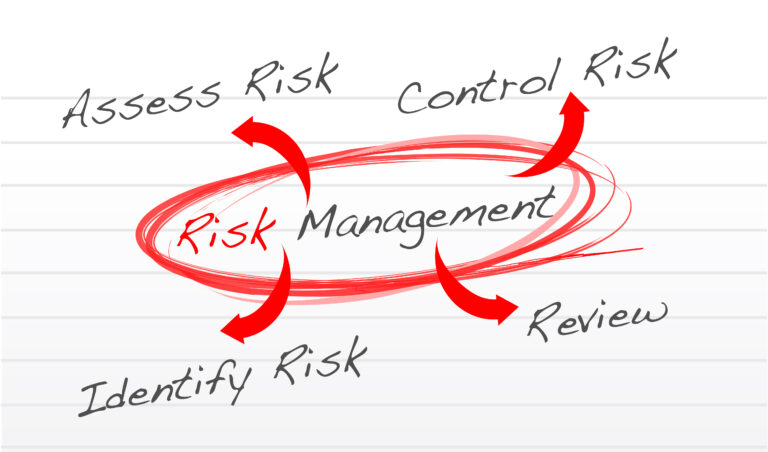Risk analysis is a significant challenge in project management. It involves identifying, monitoring, assessing and dealing with the risks likely to arise during the project and which could interfere with its quality and deliverables. Unfortunately, there is no such thing as zero risk, so we need to take the time to anticipate these risks and devise strategies and corrective measures to limit their impact over time.
What is a risk?
A risk is an uncertain event that could have a negative impact on the project’s objectives. If a risk arises, it may cause the schedule to slip or lead to an increase in the budget that was initially planned.
What are the objectives of project risk analysis?
L’objectif principal de l’analyse de risque est de permettre une gestion efficace des problèmes potentiels. En identifiant les risques et en évaluant leur impact (grâce à une matrice des risques), il est possible de prendre des mesures préventives pour minimiser les conséquences négatives.
L’analyse de risque vise également à faciliter la prise de décisions éclairées en fournissant des informations pertinentes sur les risques. Enfin, elle permet de mettre en place des plans d’action pour faire face aux risques identifiés, en déterminant les actions à entreprendre afin de réduire les probabilités d’occurrence et de minimiser les dommages éventuels.
Key stages in project risk analysis
1. Project Risk identification
Identifying all the potential risks that could affect the project is the first stage of risk analysis. This can be done by examining the various activities, processes and areas of vulnerability. It is crucial to involve all stakeholders in this process to ensure a comprehensive view of the risks.
Risk categories
Risks can be classified into three main categories:
- Known risks: These risks are identified and documented from the start of the project. They are often based on past experience, similar projects, or existing knowledge.
- Risks that are not yet known but can be assumed: These risks are not identified at the outset, but they can be anticipated based on the project team’s expertise. Although these risks are not known with certainty, experience and understanding of the field can help in considering them and developing preventive mitigation plans.
- Risks that are as yet unknown but cannot be assumed: These risks, by their very nature, are difficult or impossible to anticipate. They can occur suddenly, such as in a natural disaster, and are often the result of unexpected external factors.
The more experience you have working on similar projects, the more likely you are to be able to identify a wide range of known and assumed risks. This is why it is important to keep records of your previous projects so that you can compare them with your current project. On the other hand, the more “new” and complex a project is, the more likely it is that you will be confronted with risks that are unknown and impossible to imagine beforehand.
The different types of risk
Depending on what your project aims to achieve, different types of risk may be involved. Generally speaking, they fall into two distinct categories:
- Exogenous risks: i.e. risks external to the organisation
- Endogenous risks: i.e. risks internal to the organisation
These categories include:
- Project management risks
- Legal risks
- Human risks
- Technological risks
- Economic risks
- Risks associated with deadlines
- Natural risks
- Geographical risks
- Health risks
- Organisational risks
- IT risks
- Work-related risks
- Environmental risks
- Political risks
- Medical risks
- Market risks
2. Probability and impact assessment
Once the risks have been identified, it is important to assess the likelihood of their occurrence and the potential impact they could have on the organisation. This can be done using a risk matrix, for example. The risk matrix assigns levels of probability and impact to each risk. This is used to prioritise risks and set management priorities.
3. Assessment of existing corrective measures
In this stage, risk analysis consists of assessing the control measures already in place within the organisation. It is important to determine whether these measures are adequate to reduce the risks identified or whether additional measures are required. This assessment also helps to identify weaknesses and gaps in the existing control system and to suggest improvements.
4. Implementation of new corrective measures
The aim here is to define the new measures to be implemented if the existing ones are inadequate. The organisation will, therefore, have to choose between four types of strategy:
- Accepting the risk: the project manager and their team decide not to take any action
- Transferring the risk: responsibility for the risk is transferred to a third party
- Risk mitigation: corrective measures are put in place to limit the impact of the risk and prevent its recurrence.
- Risk avoidance: measures are put in place to avoid the risk altogether
Once introduced, these new measures will need to be followed up. The fact that a risk has been avoided does not necessarily mean that it will be successfully eliminated or that it will not occur again.
5. Assessment of residual risks
Once the current corrective measures have been evaluated and the new ones put in place, it is essential to calculate the residual risks, i.e. the risks that remain after the existing control measures have been put in place. This assessment determines whether the risks are acceptable or whether further action is needed to reduce them. It is important to ensure that residual risks remain within the acceptable limits set by the organisation.
Conclusion: the benefits of risk analysis for organisations
Better strategic decision-making
Risk analysis enables companies to identify and assess the potential risks associated with a strategic decision. Project managers can make more informed decisions and implement appropriate mitigation strategies when they understand the risks involved.
Better resource management
Risk analysis also enables organisations to manage their resources – be they human, financial or physical – more effectively. Identifying potential risks can help organisations allocate their resources more effectively and focus their efforts where the risks are greatest. This can lead to significant cost savings.
Greater resilience in the face of the unexpected
Better overall performance
Companies can improve their overall performance by regularly integrating risk analysis into their decision-making and management processes. By identifying and managing risks properly, they can avoid financial losses, minimise production interruptions, reduce costs, maintain customer satisfaction and preserve their reputation. Risk analysis is an essential tool for optimising the outcome of a project.
Additional reading about risk management and analysis in project management
Choosing PROPRISM to ensure controls of your projects
PROPRISM deploys its expertise in Project Controls to offer you solutions tailored to the management and control of your projects. We have a team of experts capable of improving the quality of your projects, promoting productivity and strategic alignment, as well as reducing costs and ensuring deadlines. PROPRISM operates in the pharmaceutical, marine, construction, engineering, transport and infrastructure, and chemical industries.
Our experts play a key role in the success of your projects. Their experience is employed to ensure that resources are properly allocated and that budget forecasts are adhered to. Using agile methods and project management tools that encourage adaptability and responsiveness to change, they encourage improvement and productivity in project management. PROPRISM also plays an essential role in providing advice and assistance, and supports your teams throughout the project life cycle with ongoing training. We also ensure coordination and motivation throughout the project to guarantee its success. Thanks to our solid expertise and essential teamwork, we can work with you to make your projects successful.




